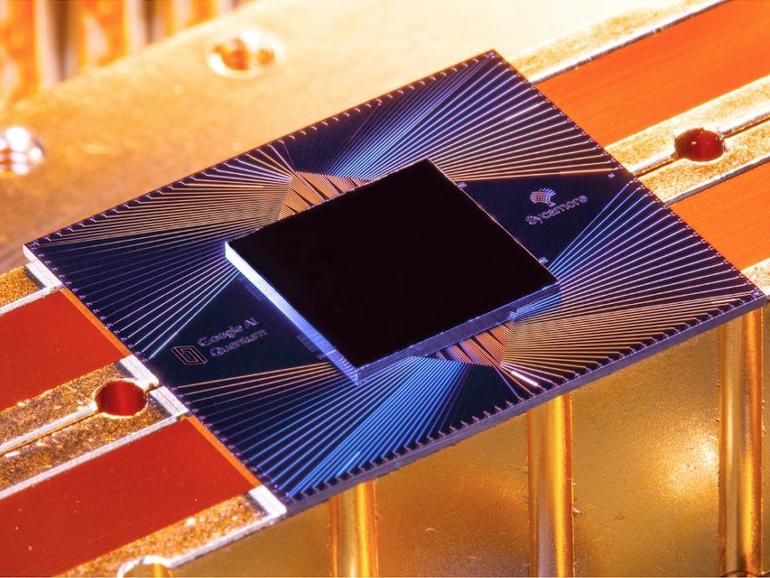In what has been hailed as a computing milestone, a team of researchers from the University of Science and Technology of China has achieved quantum supremacy thanks to a device that can manipulate tiny particles of light.
Dubbed Jiuzhang, the system performed a quantum computation called “Gaussian boson sampling”, which has been shown to be intractable for classical computers. Quantum supremacy is achieved when a quantum device is proven to be able to carry out a task that a classical computer would find impossible, or take too long to complete.
While Jiuzhang achieved Gaussian boson sampling in just 200 seconds, the researchers estimated that the same calculation would take the world’s fastest supercomputer, Fugaku, 600 million years to complete.
Quantum supremacy has only been claimed once before. Last year, Google’s researchers showed off a 54-qubit processor that they said could run a test computation in 200 seconds – a calculation that, according to the research, would take the world’s biggest supercomputers 10,000 years to complete.
Qubits come with unprecedented computational power due to their ability to exist in a dual quantum state, and therefore to carry out many calculations at one. Researchers expect that, armed with enough stable qubits, quantum computers will shake up industries ranging from AI to finance through transportation and supply-chains.
The crux of the challenge consists of creating and maintaining enough qubits to make a quantum computer useful, and there are different ways to do so. The quantum technology developed by Google, for example, is entirely different from Jiuzhang’s set up: the search giant, for its part, is investing in metal-based superconducting qubits.
This is also IBM’s preferred quantum technique, and both tech giants have poured large sums of money into superconducting circuits to push quantum computing research.
For superconducting qubits to remain controllable, however, they need to be kept in very cold temperatures – colder than in deep space. Needless to say, making this practical is still a significant barrier. The extreme sensitivity of qubits to their external environment also means that it is hard to scale up the devices.
Instead of particles of metal, Jiuzhang manipulates photons. The device was built specifically for the quantum task that it carried out, Gaussian boson sampling, which consists of simulating and predicting the erratic behavior of photons.
The task consists of injecting particles of light into a network of beam splitters and mirrors that give photons multiple choices of paths to travel through before reaching different output ports. Photons, however, come with strange quantum properties that complicate the matter: there is no way of knowing deterministically which way they will choose. What’s more, if two identical photons hit the beam splitter at exactly the same time, they will stick together and both travel the same randomly-chosen path.
All of this makes it very difficult for classical computers to identify patterns of photon behavior, and to predict the output configuration of photons based on how the particles were input. The difficulty of the calculation also exponentially increases as more photons get involved, which means that a Gaussian boson sampling device is difficult to scale up.
Christine Silberhorn, professor of integrated quantum optics at Paderborn University in Germany, has been working on Gaussian boson sampling for many years. “The scheme has its own challenges,” she tells ZDNet. “Scaling up the system is hard, because all components have to be engineered for a quantum experiment, and they have to work accurately together. Moreover, it requires the detections and processing of very large datasets.”
The researchers equipped Jiuzhang with 300 beam splitters and 75 mirrors, and said that they managed to measure up to 76 photons during their experiments – enough particles of light to make the calculation intractable for a classical computer.
Cracking the Gaussian boson sampling equation has limited usefulness. For now, in fact, the experiment has done little more than show that Jiuzhang is better than classical computers at solving one very specific task – simulating the unpredictable behavior of photons. That doesn’t mean, however, that a large-scale quantum computer will be built anytime soon to solve real-life problems.
The value of the experiment rather lies in the proof that light-based quantum computers might be just as promising as their matter-based counterparts, which so far, courtesy of big tech’s interest, have grabbed most of the headlines. “This experiment is an important milestone experiment for quantum simulations based on linear optical systems,” says Silberhorn. “It demonstrates the high potential for scalable quantum computation using photons.”
Researchers have recently taken interest in photonic quantum computers because of the potential that particles of light have to remain stable even in uncontrolled environments. Unlike devices based on superconducting qubits, photons don’t require extreme refrigeration, and could in theory scale up much faster.
“The Boson sampling experiment reported by the USTC group is a real tour de force, and illustrates the potential of photonics as a quantum technology platform,” Ian Walmsley, chair in experimental physics at Imperial College London, told ZDNet. “This is a real step forward in developing technologies that harness the power of quantum physics to perform tasks that that are not possible using current technologies.”
The new milestone achieved by the team at the University of Science and Technology of China, therefore, is likely to bring new impetus to the on-going race to build up quantum technologies. Google and IBM are only two examples of deep-pocketed players who have shown interest in developing quantum computers, and a rich ecosystem is growing at pace to bring new innovations to the space.
In addition to industry players, nation states have shown strong interest in developing quantum technologies. The Chinese government, for one, is investing heavily in the field. In fact, Jian-Wei Pan, who led the research team that worked on Jiuzhang, was also behind a recent quantum cryptography breakthrough that achieved quantum key distribution over a record-breaking 745 miles.
